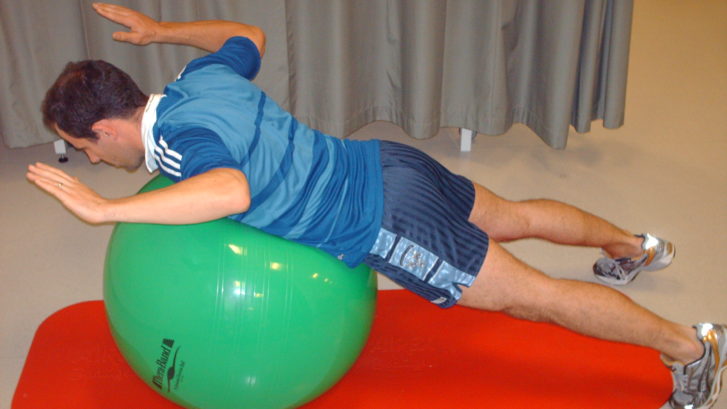Thoughts on Scapula exercise
Scapula exercises are very common and usually a needed to any shoulder rehabilitation or corrective exercise program. No program is right for everyone! Here are of scapular exercises that we thought would good to discuss.
1) Pinch Your Shoulder Blades Together :
Pinch your shoulder blades , Squeeze your scaps together. Retract your shoulders back. These are common coaching cues given during scapular exercises. The goal of these concepts is to get into better posture and set your scapula in correct postion ,ultimately resulting in better movement patterns along with better posture when performing exercises.
The classic example is Upper Body Cross Syndrome of forward head, rounded shoulders.
scapulohumeral rhythm requires a sequence of shoulder and scapular movement simultaneously. Pinching your shoulder blades together is essentially contracting your middle trapezius to fully retract your scapula and then move your arm. While this is not nearly as bad on shoulder mechanics as lifting your arm . it does not have good advantage to lift your arm in a fully retracted position. While fully retract the scapula which is essentially performing and isometric trapezius contraction, you are likely to limit the normal protraction and upward rotation movement that occurs during arm elevation and movement.
If the milestone of this to give cue for improve posture and improve mechanics while exercising the arm, maybe a better cue would be to instruct thoracic extension.
Think about , you can still have a very kyphotic and rounded thoracic spine and retract your scapula, it’s. Very difficult to perform , but the goal is to really get your thoracic spine extended.
2) Mobility and Strength to Improve Scapular Symmetry.
S
[restrict]
Sometimes Feel guilty to assessing someone’s posture, finding this forward head rounded shoulder posture, and then assuming we need to work on things like pec and upper cervical mobility while strengthening the lower trap and deep neck flexors. These are all good things to work on, however this is likely a simplistic view.
First let’s take a step back and get something out of the way. Your scapula are not symmetrical. The vast majority of people are not symmetrical and It even people that are close have subtle differences. The fact is, we are unilateral creatures. We are typically one hand dominant and we typically function with predominant movement patterns that are related to this. This tends to really become an issue when we start to talk about people that perform a repetitive unilateral activity all day. Here we are not just talking about specific sports. Let’s assume that you are sitting at your computer and using your mouse in your right hand counts too. This inherently creates asymmetries throughout the body, including the hips, spine, rib cage, and of course the scapula.
There are school of thoughts which says , scapular position is more related to rib and thoracic position than anything else, including tight muscles and weak or inhibited muscles. The scapula rests on the rib cage and thus moves with the rib cage
Do you need to work on these muscle imbalances? Absolutely. However, proper alignment is needed as well and it should be assessed first.
3) Alignment before mobility before stability.
Perform Scapular Exercises Bilaterally , the YTWL exercises. We do not prefer a lot of  the classic YTWL exercises either prone off the table or on a physioball bilateral. However in that postion the upper trap activity needed to stabilize the head and just don’t feel like you get the proper movement pattern you are looking to achieve. Perhaps it helps with posture. We know that there are pros and cons.
the classic YTWL exercises either prone off the table or on a physioball bilateral. However in that postion the upper trap activity needed to stabilize the head and just don’t feel like you get the proper movement pattern you are looking to achieve. Perhaps it helps with posture. We know that there are pros and cons.
If we are looking to strengthen a muscle, we prefer to unilateral prone exercises and focus on strength and motor control. That must be our priority. Moreover , we shut down the over activity of upper trap and get proper movement pattern, then function and movement patterns becomes our next priority, Far more often we uses our arms in this fashion – one arms pulls while one arm pushes. This can be seen in some of our most common activities like walking, jogging, and running as well as unilateral overhead sports like tennis, volleyball.
Now you have question that are there times when you should work your scapula bilaterally? Definatly, we prefer exercise in swimmers (expecially for the breast and butterfly  strokes) and people that have to push and pull large objects at work all day. It means specificity training method..
strokes) and people that have to push and pull large objects at work all day. It means specificity training method..
For example : if you pinch your shoulders back and hold this position and perform the row you are performing a lot of shoulder extension and elbow flexion (lats and biceps) and not as much scapular retraction (traps etc).
If you are more worried about functional movement, you wouldnt want to pinch your shoulder blades before your row, in fact you want to work the sequence:
Grip – retract the scap -extend the arm
Functional movement is all about a coordinating your sequential movements.
Take home message is that you don’t have to work your scapulas bilaterally, and there is some very clear reasons why you would actually want to do the opposite and work the reciprocal push-pull pattern instead.
I hope this at least stirred some thought and discussion. what do you think?
image courtesy: martamontenegro.com , jolitabrilliant.com , stack.com
[/restrict]
To Read More Register Now or Log in
Onces you register with us you can access restricted content……




Leave a Reply
Want to join the discussion?Feel free to contribute!